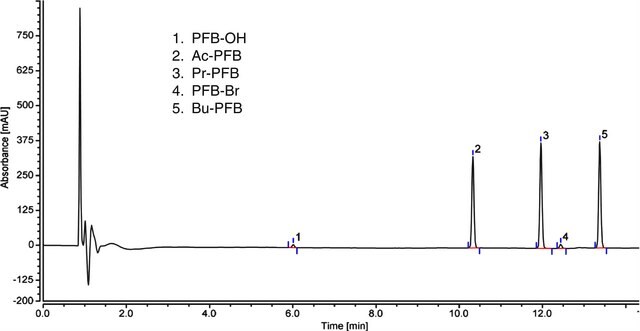MAK044
Free Fatty Acid Quantitation Kit
sufficient for 100 colorimetric or fluorometric tests
Synonim(y):
Free Fatty Acid Assay Kit
Zaloguj sięWyświetlanie cen organizacyjnych i kontraktowych
About This Item
Kod UNSPSC:
12161503
Polecane produkty
zastosowanie
sufficient for 100 colorimetric or fluorometric tests
Zastosowanie
cosmetics
food and beverages
metoda wykrywania
colorimetric
fluorometric
powiązane choroby
endocrinological disorders, diabetes; cancer
temp. przechowywania
−20°C
Opis ogólny
Free fatty acids, also know as nonesterified fatty acids, circulate in the plasma bound to albumin. The majority of free fatty acids are derived from either dietary sources or are mobilized from adipose tissue. Plasma free fatty acids are elevated in many obesity-related disorders and may contribute to insulin resistance in peripheral tissues. Conditions such as sepsis and tumors producing lipoactive homones may also be associated with elevated free fatty acid levels.
Abnormalities in fatty acid metabolism causes fatty liver disease. Accumulation of free fatty acid in myocytes leads to the risk of cardiac dysfunction. Increased fatty acid β-oxidation is implicated in cardiac ischemia.
Abnormalities in fatty acid metabolism causes fatty liver disease. Accumulation of free fatty acid in myocytes leads to the risk of cardiac dysfunction. Increased fatty acid β-oxidation is implicated in cardiac ischemia.
Zastosowanie
Free Fatty Acid Quantitation Kit has been used in the following:
- to measure lipid hydrolysis, by determining the free fatty acid in digested sample.
- to measure plasma and serum free fatty acids level.
- to quantify free fatty acids level in liver tissue.
Przydatność
Suitable for detecting the long-chain free fatty acids in various biological samples, such as serum, plasma and other body fluids, food, growth media, etc.
Zasada
In this kit, the concentration of fatty acids (C8 and longer) is determined by a coupled enzyme assay, which results in a colorimetric (570 nm)/ fluorometric (λex = 535/λem = 587 nm) product, proportional to the fatty acids present.
Ta strona może zawierać tekst przetłumaczony maszynowo.
produkt powiązany
Numer produktu
Opis
Cennik
zastąpiony przez
Hasło ostrzegawcze
Danger
Zwroty wskazujące rodzaj zagrożenia
Zwroty wskazujące środki ostrożności
Klasyfikacja zagrożeń
Resp. Sens. 1
Kod klasy składowania
10 - Combustible liquids
Temperatura zapłonu (°F)
188.6 °F - closed cup
Temperatura zapłonu (°C)
87 °C - closed cup
Wybierz jedną z najnowszych wersji:
Certyfikaty analizy (CoA)
Lot/Batch Number
Nie widzisz odpowiedniej wersji?
Jeśli potrzebujesz konkretnej wersji, możesz wyszukać konkretny certyfikat według numeru partii lub serii.
Masz już ten produkt?
Dokumenty związane z niedawno zakupionymi produktami zostały zamieszczone w Bibliotece dokumentów.
Klienci oglądali również te produkty
Transgenic expression of fatty acid transport protein 1 in the heart causes lipotoxic cardiomyopathy.
Chiu H C, et al.
Circulation Research, 96(2), 225-233 (2005)
Sarmistha Mukherjee et al.
Hepatology (Baltimore, Md.), 65(2), 616-630 (2016-11-04)
The regenerative capacity of the liver is essential for recovery from surgical resection or injuries induced by trauma or toxins. During liver regeneration, the concentration of nicotinamide adenine dinucleotide (NAD) falls, at least in part due to metabolic competition for
Kuifen Ma et al.
Iranian journal of basic medical sciences, 20(11), 1207-1212 (2018-01-05)
Arachidonic Acid/5-lipoxygenase (AA/5-LOX) pathway connects lipid metabolism and proinflammatory cytokine, which are both related to the development and progression of nonalcoholic fatty liver disease (NAFLD). Therefore, the present study was designed to investigate the role of AA/5-LOX pathway in progression
Lipid metabolism and liver inflammation. II. Fatty liver disease and fatty acid oxidation
Reddy J K and Sambasiva R M
American Journal of Physiology: Gastrointestinal and Liver Physiology, 290(5) (2006)
Association of Temperament and acute stress responsiveness with Productivity, Feed efficiency, and Methane emissions in Beef cattle: an Observational study
Llonch P, et al.
Frontiers in veterinary science, 3, 43-43 (2016)
Nasz zespół naukowców ma doświadczenie we wszystkich obszarach badań, w tym w naukach przyrodniczych, materiałoznawstwie, syntezie chemicznej, chromatografii, analityce i wielu innych dziedzinach.
Skontaktuj się z zespołem ds. pomocy technicznej


